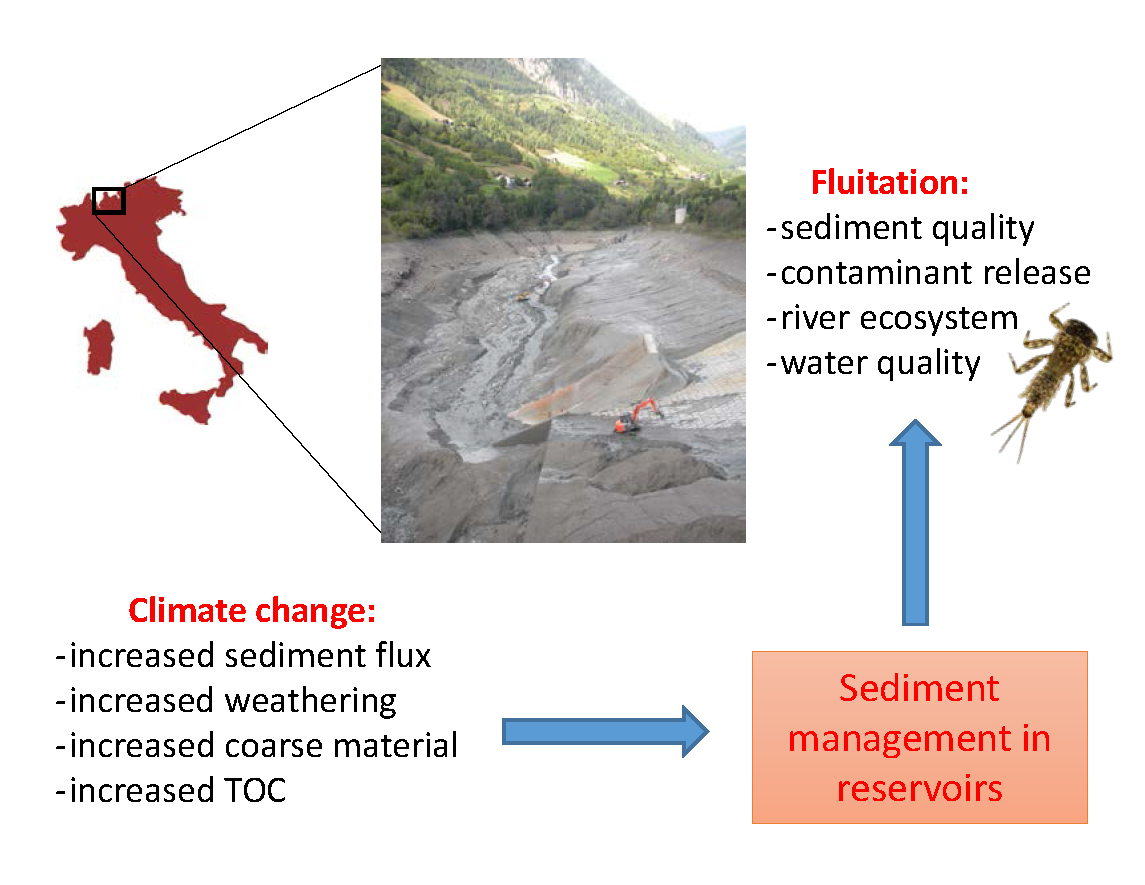Reservoirs are characterized by accumulation of sediments where micropollutants may concentrate, with potential toxic effects on downstream river ecosystems. However, sediment management such as flushing is needed to maintain storage capacity. Climate change is expected to increase sediment loads, but potential effects on their quality are scarcely known. In this context, sediment contamination by trace elements (As, Cd, Cr, Cu, Hg, Ni, Pb, Zn) and organics (PAHs, PCBs, C>12) was analyzed in 20 reservoirs located in Italian Central Alps. A strong As and a moderate Cd, Hg and Pb enrichment was emphasized by Igeo, with potential ecotoxicological risk according to PEC quotients. Siltation, granulometry, total organic carbon (TOC) and altitude resulted as the main drivers governing pollutant concentrations in sediments. According to climate change models, expected increase of rainfall erosivity will enhance soil erosion and consequently the sediment flow to reservoirs, potentially increasing coarse grain fractions and thus potentially diluting pollutants. Conversely, increased weathering may enhance metal fluxes to reservoirs. Increased vegetation cover will potentially result in higher TOC concentrations, which may contrast contaminant bioavailability and thus toxicity. Our results may provide elements for a proper management of contaminated sediments in a climate change scenario aiming at preserving water quality and ecosystem functioning.

